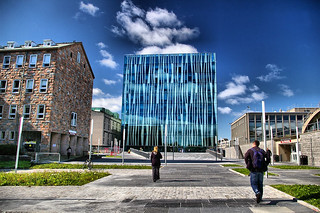It is not unknown for the Greens in Wales to have run candidates with Plaid Cymru at national elections, from 1992 to 2000 Ceredigion was represented by Cynog Dafis as a joint Plaid Cymru/Green Party candidate. Given that there is the possibility of the Greens and PC standing joint candidates in the upcoming EU elections is it time the Scottish National Party and Scottish Greens consider doing the same? As far as I can see both sides would stand to gain in what is a very unusual moment in Scottish politics.
Below are the actual results and then what could have happened
| European Election 2009: Scotland[3][4] | |||||
|---|---|---|---|---|---|
| List | Candidates | Votes | % | ±% | |
| SNP | Ian Hudghton, Alyn Smith Aileen McLeod, Drew Hendry, Duncan Ross, Gordon Archer | 321,007 (160,503.5) | 29.1 | +9.4 | |
| Labour | David Martin, Catherine Stihler Mary Lockhart, Paul McAleavely, Kirsty Connell, Nasim Khan[5] | 229,853 (114,926.5) | 20.8 | -5.6 | |
| Conservative | Struan Stevenson Belinda Don, Helen Gardiner, Donald G. MacDonald, Gerald Michaluk, PJ Lewis[6] | 185,794 | 16.8 | -0.9 | |
| Liberal Democrat | George Lyon Euan Robson, Robert Aldridge, Patsy Kenton, Douglas Herbison, Clive Sneddon[7] | 127,038 | 11.5 | -1.6 | |
| Scottish Green | Elaine Morrison, Chas Booth, Kirsten Robb, Alastair Whitelaw, Ruth Dawkins, Peter McColl | 80,442 | 7.3 | +0.5 | |
Actual 2009 allocation
|
If the Greens and SNP ran together
|
Together the Greens and SNP would have won 3 MEPs
One exceptional reason for an electoral pact would be the fact that the European elections will take place around three months before the independence referendum. Rather than fighting each other wouldn't it be best for the main parties that support independence to focus on the probably once in a lifetime opportunity that is the referendum?
For the minority of Scottish Greens who do not support independence they would stand to gain as the winning of an MEP, even shared with the SNP, would be a big step for the party.
There are big differences on policy between the Greens and SNP, whether the new split likely to develop around membership of NATO or the news today that Scotland has missed it's climate targets. Nevertheless. the SNP has shown itself able to work with the Greens more broadly in Europe as a member of the Greens European Parliament group. Of all the levels of governance Europe is probably where there is least contention between the two.
There are big differences on policy between the Greens and SNP, whether the new split likely to develop around membership of NATO or the news today that Scotland has missed it's climate targets. Nevertheless. the SNP has shown itself able to work with the Greens more broadly in Europe as a member of the Greens European Parliament group. Of all the levels of governance Europe is probably where there is least contention between the two.
Furthermore, for the SNP it allows them to present the image of a united front and minimise partisan competition amongst the Yes side and gives them the opportunity to decisively win the European elections. This should not be underestimated in the crucial run up to the referendum as the media will be intensely focused on these elections as a barometer for the imminent referendum.
What about the SSP and Solidarity, well frankly they haven't had the support at recent EU elections to merit such a pact.Unlike the Greens there is no real possibility of either of these parties seriously fighting and hoping to win a seat.
An electoral pact would be fraught with problems, but it has been proven to work elsewhere and surely if both parties are serious about focusing on the referendum it is something that needs to be considered.



